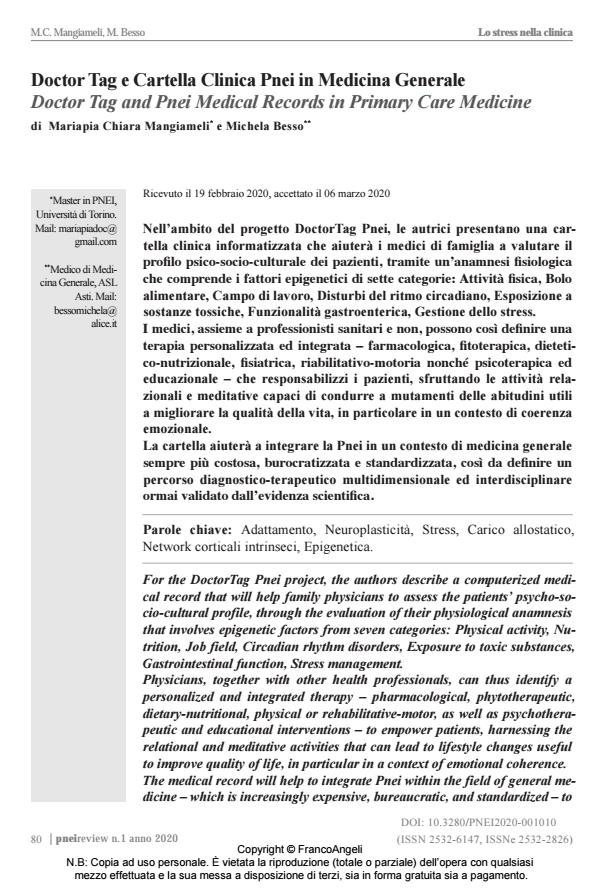Doctor Tag and Pnei Medical Records in Primary Care Medicine
Journal title PNEI REVIEW
Author/s Mariapia Chiara Mangiameli, Michela Besso
Publishing Year 2020 Issue 2020/1
Language Italian Pages 18 P. 80-97 File size 155 KB
DOI 10.3280/PNEI2020-001010
DOI is like a bar code for intellectual property: to have more infomation
click here
Below, you can see the article first page
If you want to buy this article in PDF format, you can do it, following the instructions to buy download credits

FrancoAngeli is member of Publishers International Linking Association, Inc (PILA), a not-for-profit association which run the CrossRef service enabling links to and from online scholarly content.
For the DoctorTag Pnei project, the authors describe a computerized medical record that will help family physicians to assess the patients’ psycho-socio- cultural profile, through the evaluation of their physiological anamnesis that involves epigenetic factors from seven categories: Physical activity, Nutrition, Job field, Circadian rhythm disorders, Exposure to toxic substances, Gastrointestinal function, Stress management. Physicians, together with other health professionals, can thus identify a personalized and integrated therapy - pharmacological, phytotherapeutic, dietary-nutritional, physical or rehabilitative-motor, as well as psychotherapeutic and educational interventions - to empower patients, harnessing the relational and meditative activities that can lead to lifestyle changes useful to improve quality of life, in particular in a context of emotional coherence. The medical record will help to integrate Pnei within the field of general medicine - which is increasingly expensive, bureaucratic, and standardized - to define a multidimensional and interdisciplinary diagnostic-therapeutic pathway now validated by scientific evidence.
Keywords: Doctor Tag, Family Physicians, epigenetic factors, stress management, multidimensional, interdisciplinarity.
Mariapia Chiara Mangiameli, Michela Besso, Doctor Tag e Cartella Clinica Pnei in Medicina Generale in "PNEI REVIEW" 1/2020, pp 80-97, DOI: 10.3280/PNEI2020-001010